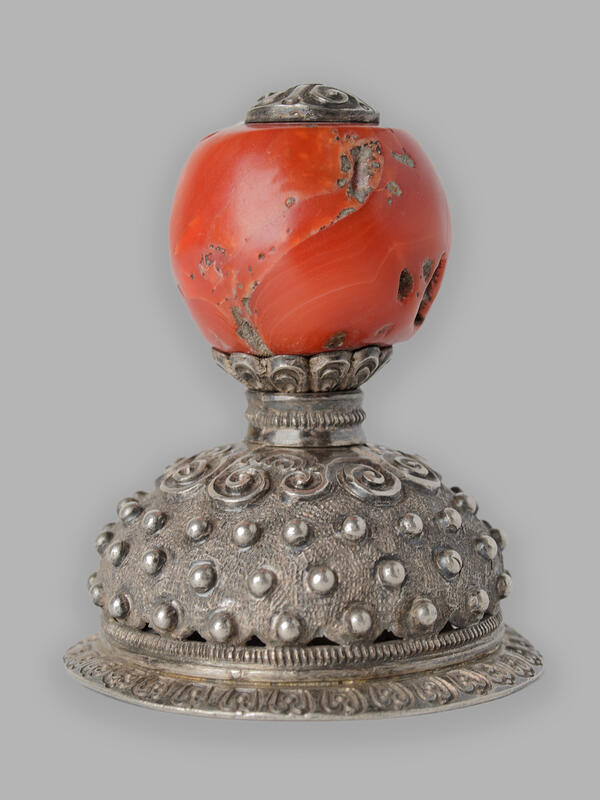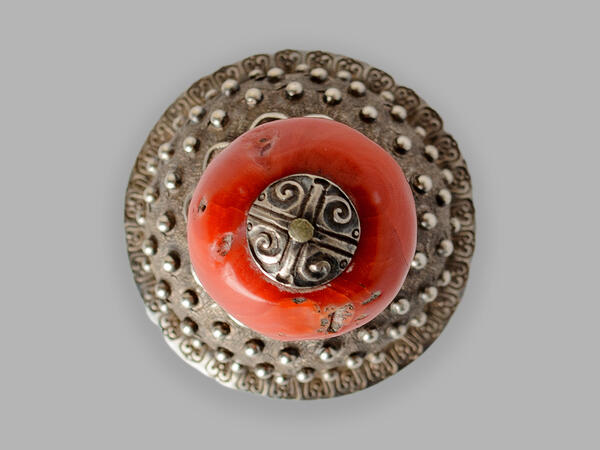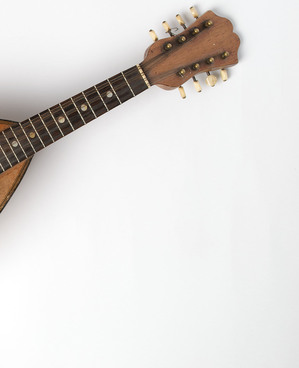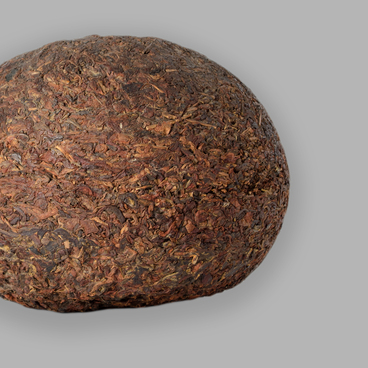Districts of Buryatia were positioned along the tea trade route. The local population was in constant contact with Mongols and Chinese: tea was transported to Russia across the Mongolian border.
The 19th century was marked by the active development of international contacts. Buryat jewelers learned from visiting Chinese craftsmen who came to work in Transbaikalia, which contributed to the development and enrichment of manufacturing techniques and decorative motifs.
Such contacts had an impact on the culture, everyday life, and worldview of both parties. They also resulted in the development of jewelry — the transformation of existing types of jewelry and the appearance of new ones which evolved under the influence of East Asian culture and Buddhism.
For example, a denze — a silver hemispherical headdress finial with a coral, lazurite, or amber insert — originated from China where each stone corresponded to a government official of a certain rank.
For a Buryat, a headdress was a sacred object. Both men and women wore round hats with short brims and a red zalaa tassel on top. Every little part and color had its own symbolic meaning.
The hemispherical shape of the headdress symbolized the sky, the yurt, and the outlines of hills typical of Buryatia and Mongolia. The cone-shaped form resembled mountains which were believed to be inhabited by spirits, masters, and deities.
A denze was the main attribute of a Buryat hat. Usually, it was made of the materials which Buryats considered to be most precious — silver and red coral. With its muted and at the same time saturated color palette, coral enlivened the matt-white surface of silver and contrasted with the background of a stamped or openwork pattern.
The use of red coral as the main element is not accidental. Coral had an important meaning and symbolized both wood and the depths of the ocean. Red was also a special color in rituals and magic ceremonies.
The red color of coral
was associated with fire, sun, and blood — symbols of life energy, warmth, and
purification. Silver was considered the national metal of Buryats. The displayed
item was acquired on February 28, 1952.




